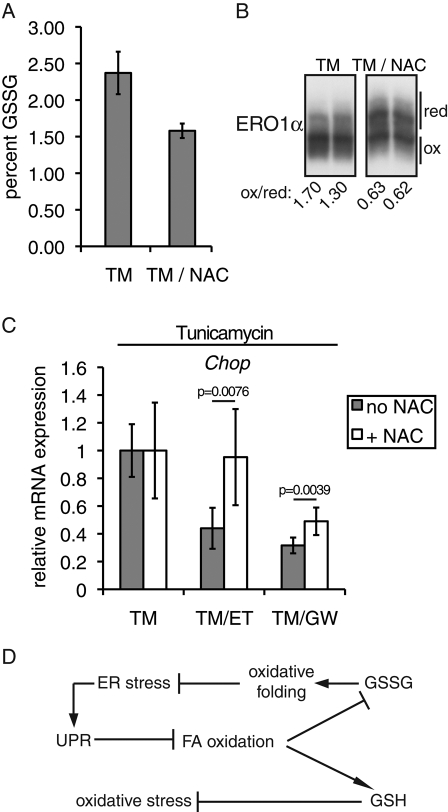FIGURE 7:
Diminishing GSSG ablates protection from ER stress by inhibition of FA oxidation. (A) Cellular levels of total glutathione and GSSG were determined as in Figure 5A in cells treated for 4 h with 250 ng/ml TM alone or TM plus 20 mM NAC. The percentage of glutathione as GSSG, shown here, was calculated from those two measurements. (B) The relative oxidation state of ERO1α was determined in cells treated in duplicate as in A. The densitometrically quantitated ratio of oxidized to reduced ERO1α is given below the image. (C) Cells were pretreated for 1 h with 20 mM NAC. Then 250 μg/ml TM was added to the media, along with vehicle, 50 μg/ml ET, or 5 μg/ml GW6471. After 4 h, Chop mRNA expression was assessed by qRT-PCR and is expressed here relative to cells treated with or without NAC, in the absence of an inhibitor of FA oxidation. Thus ET and GW6471 reduce Chop expression during TM treatment when NAC is absent but not (or not as much) when it is present. n = 6 samples for each condition from two separate experiments. (D) Working model to describe the relationship among fatty acid oxidation, glutathione, oxidative folding, and ER stress. See Discussion for details.

